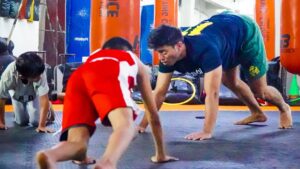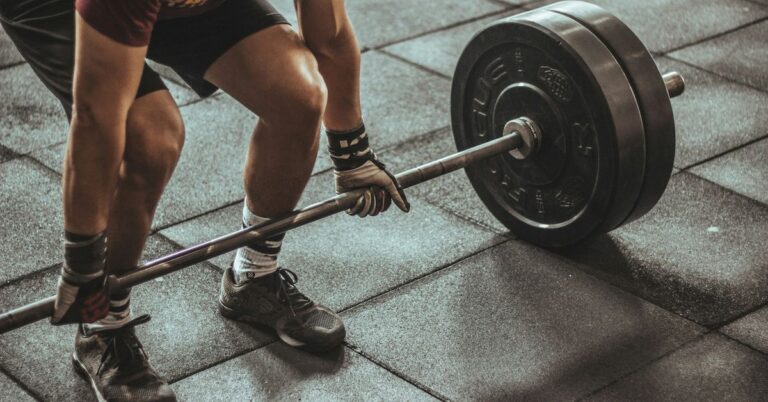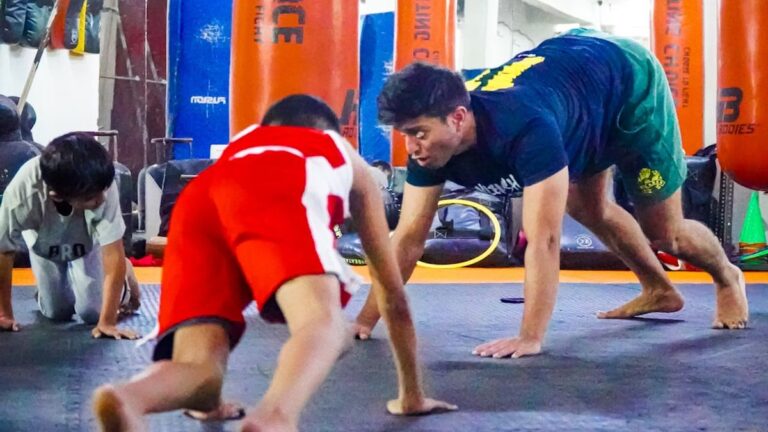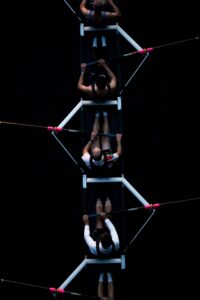Elevate Your Game with These Unexpected Training Techniques
In the relentless pursuit of athletic excellence, traditional training regimens often take center stage. We’ve all heard about the necessity of strength training, cardio, and skill drills. But what if I told you that some of the most effective training techniques don’t fit neatly into any of those categories? Yes, that’s right! Sometimes, elevating your game is about stepping outside the box—or perhaps even stepping away from it entirely. In this article, we’ll dive into a variety of unexpected training techniques that can enhance your performance and take your athletic prowess to a new level.
1. Visualization Techniques: The Mind’s Playground
Let’s kick things off with a technique that’s more mental than physical. Visualization is a practice that’s been utilized by elite athletes across various sports for decades. It involves mentally rehearsing your performance, visualizing every movement, and feeling the emotions associated with success. It might sound a bit out there, but the science backs it up.
Research suggests that visualization can enhance muscle memory and improve focus. When you visualize yourself executing a perfect jump shot or a flawless sprint, your brain activates similar neural pathways as if you were actually performing those actions. It’s a bit like training your brain while your body takes a well-deserved break. I remember when I first tried visualization before a big race. Picture me there, eyes closed, imagining every stride, every breath. Not only did I feel more prepared, but I also crossed that finish line with a newfound confidence. It struck me that sometimes, the mind can be your greatest ally.
2. Dance Your Way to Better Agility
Who says training has to be all sweat and groans? Enter dance—yes, you heard that right. Incorporating dance into your training routine can enhance agility, balance, and coordination. Whether it’s salsa, hip-hop, or even a good old-fashioned waltz, dancing requires quick footwork, precise movements, and body control. These are the very skills that can translate into athletic performance.
Take soccer players, for instance. Many have taken up dance classes to help improve their footwork and agility on the field. A study published in the Journal of Sports Science found that dancers often outperform non-dancers in agility tests. So, why not shake it out? When I caught a glimpse of a few NFL players busting moves during their off-season, it made me think: who wouldn’t want to turn up the music and dance their way to better performance?
3. Play with Your Food: Nutritional Training
Okay, I may have your attention now! Nutrition, while not exactly a training technique, plays a pivotal role in performance. But let’s think beyond just counting calories or balancing macronutrients. What if you approached your meals as a training session? This is where “nutritional training” comes into play.
Start by experimenting with different foods to see how they affect your energy levels, recovery, and overall performance. Some athletes swear by the power of beets for endurance, while others might find that a protein-rich breakfast fuels their morning workouts. The idea is to treat your diet as a lab for discovering what works best for you.
For instance, I once tried a week-long experiment where I went gluten-free, just to see how it felt. I was pleasantly surprised by the boost in my energy levels! With all the food blogs and Instagram accounts dedicated to nutrition, the possibilities are endless. Don’t be afraid to get creative—your plate can be your canvas.
4. The Power of Play: Gamification of Training
Who said training has to be serious business? Enter the world of gamification. This technique involves turning your training into a game. Whether it’s through friendly competitions with teammates or using apps that track your progress and reward achievements, gamification can inject a sense of fun and motivation into your workouts.
Consider using tools like Strava or even fitness video games that require physical movement. They not only track your performance but also allow you to challenge friends or even strangers. I once joined a virtual running challenge and found myself sprinting faster than I ever thought possible—just to keep up with my friends’ times. It’s amazing how a little competition can push you to new limits!
5. Breathing Techniques: The Unsung Hero
It’s easy to overlook breathing when discussing training techniques. We do it automatically, right? But mastering your breath can significantly enhance your performance. Techniques such as diaphragmatic breathing, box breathing, or even humming can help increase oxygen flow, reduce anxiety, and improve focus.
Take a moment to consider this: how many times have you found yourself panting after a particularly grueling workout? That’s your body screaming for oxygen! By practicing proper breathing techniques, you can train your body to utilize oxygen more efficiently. I remember a yoga class where the instructor emphasized the importance of breath. After a few sessions, I noticed a marked improvement in my endurance during runs. Who knew that in the midst of all the running and lifting, a simple inhale-exhale could make such a difference?
6. Incorporating Technology: The Modern Athlete’s Toolkit
We live in a tech-savvy world, and there’s no shortage of gadgets and apps designed to enhance athletic performance. Wearable technology, such as fitness trackers and smartwatches, can provide real-time feedback on your heart rate, distance traveled, and even sleep quality. This data can help you tailor your training to suit your individual needs.
But it’s not just about tracking your metrics. Technology can also be used to analyze your technique. Video analysis apps allow you to record your movements and provide feedback on your form. I can’t tell you how many times I thought I was executing a perfect squat only to find out I was doing it all wrong when I reviewed the footage. Sometimes, a little tech can keep you honest!
7. Outdoor Adventures: Training in Nature
Training doesn’t have to be confined to the four walls of a gym or a track. Embracing the great outdoors can add an element of surprise and excitement to your workouts. Hiking, trail running, or even rock climbing can challenge your body in ways traditional training cannot. Plus, who doesn’t enjoy a breath of fresh air?
Research indicates that exercising in nature can reduce stress levels and enhance mood—effects that can translate into improved performance. I remember a weekend where I ditched my usual treadmill routine for a hike in the mountains. Not only did I get a killer workout, but I also felt rejuvenated by the scenery. The connection between physical activity and nature can be a game-changer; after all, it’s hard to feel stressed when you’re surrounded by trees and the sound of birds chirping.
8. Unconventional Strength Training: Odd Objects
Let’s face it: lifting weights can sometimes feel monotonous. So why not mix things up by incorporating odd objects into your strength training routine? This could be anything from sandbags, tires, or even your own body weight in creative ways. The idea is to challenge your muscles in unfamiliar ways, which can lead to improved strength and power.
For example, flipping a tire requires not only strength but also coordination and balance. I once joined a boot camp where we used logs as weights. You’d be surprised how much you can sweat while trying to lift something that feels like it belongs in a lumberyard! These unconventional methods can lead to greater overall fitness and help prevent the dreaded plateau.
9. Recovery is Key: Active Recovery Techniques
We often hear about the importance of recovery, but many athletes still fall into the trap of neglecting it. Active recovery is a technique that involves engaging in low-intensity activities on rest days to promote blood flow and speed up recovery. This could be anything from light yoga to leisurely cycling or even a gentle swim.
When I first started incorporating active recovery into my routine, I noticed a significant difference in how my body felt post-workout. Instead of feeling like I had been hit by a truck after an intense training session, I found that light movement helped alleviate soreness and kept my energy levels up. It’s like giving your muscles a gentle hug instead of leaving them to fend for themselves on recovery days.
10. Mindfulness and Meditation: The Calm Before the Storm
Finally, let’s dive into mindfulness and meditation. In the high-pressure world of sports, maintaining a clear and focused mind is essential. Integrating mindfulness practices into your training can help you stay centered, reduce anxiety, and enhance your overall performance.
Studies suggest that athletes who practice mindfulness experience better focus and improved emotional regulation. Whether it’s through guided meditation, breathing exercises, or simply taking a few moments to be present, these practices can significantly impact your game. I remember attending a workshop where an athlete shared how meditation helped him stay calm during critical moments in competition. It was a simple yet powerful reminder that sometimes, the mental game is just as important as the physical one.
Conclusion: Embrace the Unconventional
There you have it—ten unexpected training techniques that can elevate your game and transform your approach to fitness. Each of these methods provides a unique avenue for improvement, whether it’s through mental rehearsal, playful engagement, or embracing the outdoors. As athletes, we often get caught up in the grind, but sometimes the key to unlocking our potential lies in the unorthodox.
So, the next time you’re planning your training regimen, consider incorporating a few of these unconventional techniques. You might just find that shaking things up leads to greater gains—not just physically, but mentally and emotionally as well. After all, sports should be about growth, discovery, and yes, a little bit of fun along the way.
Now, go out there and elevate your game! (And maybe take a dance class while you’re at it—I promise you won’t regret it.)













